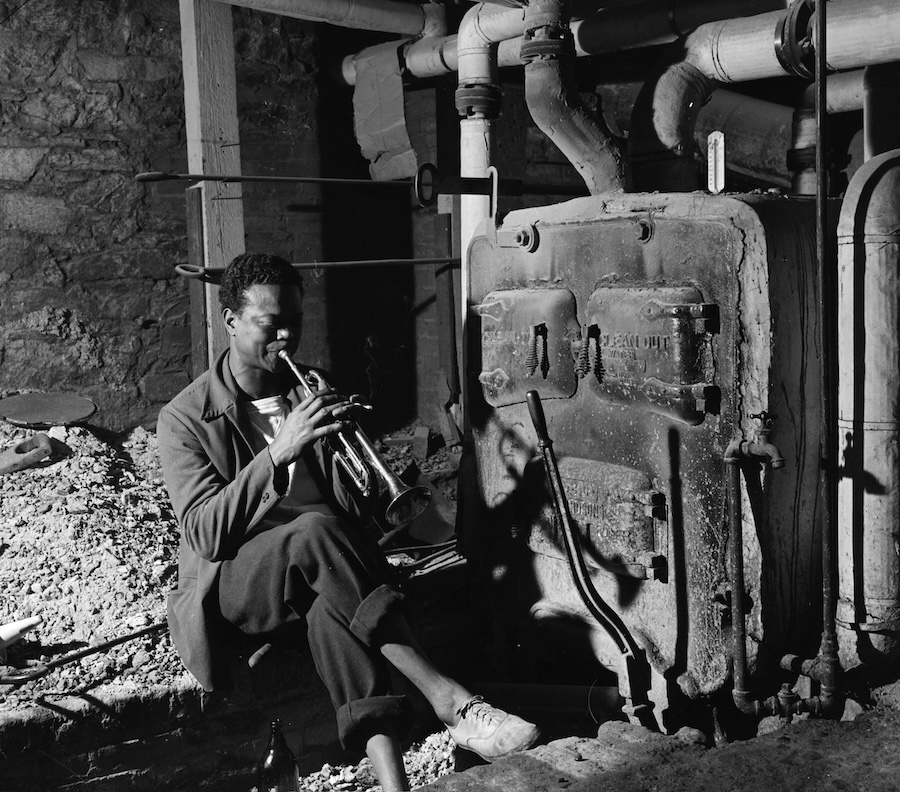Frankie Newton: Lost and Found

The Resounding Silence of Frankie Newton: A Jazz Trumpet's Echo Through Time
A Musician Fades into the Shadows
Picture this: mid-1940s, a haunting photograph by Weegee captures Frankie Newton, the trumpeter, adrift from the vibrant jazz scene. He stands before the furnace of his apartment building, a superintendent now, surrounded by heaps of coal, blowing his horn with eyes closed, a world away.
This image foreshadows the tragic fire of 1948 that consumed his apartment, leaving Newton with nothing but a fragment of his horn, transformed into a necklace. A poignant symbol of a fading career, culminating in his untimely death in 1954 at the age of forty-eight.
A Legacy Whispered in the Grooves of History
Though his name may not ring bells today, Frankie Newton was a force in the 1930s and early 1940s jazz world. He played alongside legends like Bessie Smith and Billie Holiday, his muted trumpet adding a touch of smoky elegance to over a hundred recordings, some of the earliest on the Blue Note label.
Trumpeter Bill Dillard described Newton's playing as evocative of "the country and the woods and the rolling hills," a testament to his mastery of tone and texture. Listen to "The Blues My Baby Gave to Me" or "Port of Harlem Blues," and you'll hear the smoldering drama and delicate phrasing that defined his unique style.
More Than Music: A Man of Principle and Passion
Newton was a Renaissance man: painter, writer, athlete, outspoken Communist. In the segregated 1940s, he and his partner Ethel Klein lived in Greenwich Village, moving in integrated circles of artists and intellectuals. Figures like Henry Miller and Paul Robeson numbered among his friends. Even James Baldwin credited meeting Newton as a foundational experience.
His uncompromising principles often led to clashes. There's a story of Newton halting a performance to confront businessmen who had disrespectfully tossed coins at the dancer Baby Laurence. "Gentlemen," he declared, "I don't want anyone throwing nickels, dimes and quarters at the greatest dancer in the world... You see, he's a creative man, and all my musicians are creators. Of art." A powerful statement of his values.
Unearthing a Hidden Voice: The Journalist and Activist
A decade-long obsession with Newton led to the discovery of a treasure trove: articles he penned for *The Daily Worker* in the 1940s. These writings, previously unknown to researchers, reveal a multifaceted man deeply engaged in the political landscape of his time.
From advocating for desegregation in sports to railing against budget cuts in public school athletics, Newton's journalistic voice was clear and determined. His articles offer a glimpse into his convictions and the social context that shaped his art.
The Final Notes: A Legacy Rediscovered
Newton's tragic early death and the fire that consumed much of his history have left us with fragments of a remarkable life. But through his music, his writing, and the recollections of those who knew him, we can begin to piece together the story of Frankie Newton: a complex, principled artist whose trumpet deserves to be heard again.
His last known recording, a 1951 jam session in Boston, captures the essence of his spiritual nonconformity. As his wistful phrases drift through the air, we can imagine him, eyes closed, transported by the music, just like in Weegee's haunting photograph.